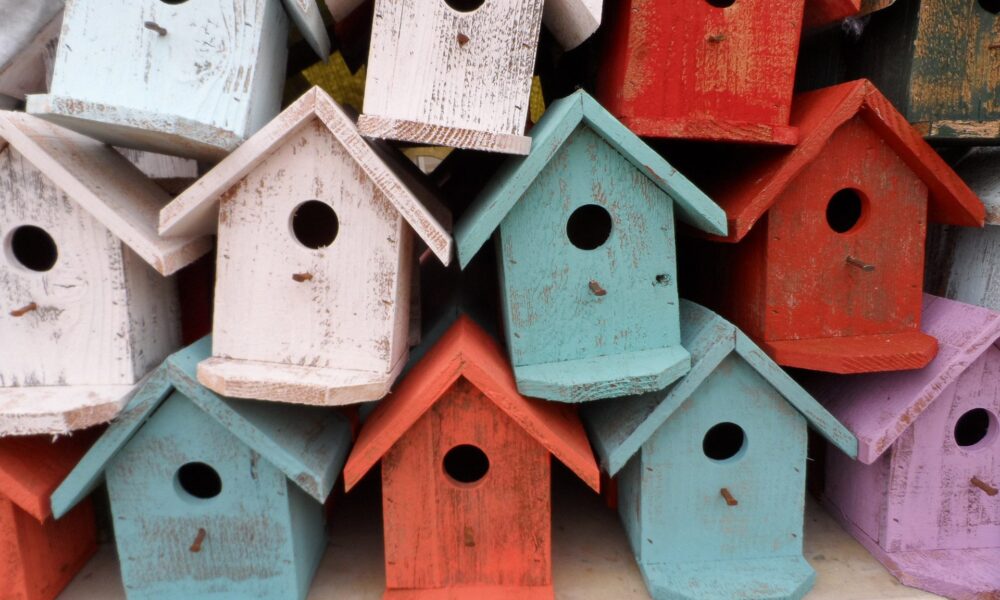
Why Birds Need Houses, Especially in Winter
As the temperatures drop and the days grow shorter, many birds face a tough challenge: finding safe and warm places to survive the winter. While some species migrate to warmer climates, others stay put and brave the cold. For these hardy birds, having a birdhouse can make all the difference. Here’s why providing birdhouses is especially crucial during the winter months.
Protection from the Elements
Winter weather can be harsh, with freezing temperatures, snow, and icy winds. Birds need a place to shelter from these extreme conditions. A well-constructed birdhouse offers insulation and protection, helping to maintain body heat and reduce energy expenditure. Without adequate shelter, birds are more vulnerable to hypothermia and frostbite.
Safe Havens from Predators
Predators like hawks, owls, and even neighborhood cats are a constant threat to birds. In winter, when natural cover such as foliage is sparse, birds are more exposed. Birdhouses provide a safe retreat where they can rest without fear of becoming an easy target.
Roosting Together for Warmth
Many bird species, such as chickadees and bluebirds, will roost together in a single birdhouse during cold nights. This communal roosting helps them share body heat, significantly increasing their chances of surviving frigid conditions. A birdhouse designed with adequate space and ventilation can accommodate multiple birds, promoting this behavior.
Support During Food Scarcity
Winter often brings a scarcity of food, which means birds have to work harder to find sustenance. A birdhouse close to a reliable food source, like a feeder, allows birds to conserve energy they would otherwise spend searching for shelter and food separately. Adding a birdhouse to your backyard is an easy way to create a supportive environment.
Feeders: A Vital Lifeline in Winter
In addition to birdhouses, feeders play an essential role in supporting birds through the winter months. When natural food sources like insects, seeds, and berries are scarce, feeders provide a reliable source of nutrition. High-energy foods like suet, sunflower seeds, and peanuts can help birds maintain their energy levels and survive the cold. Placing feeders near birdhouses creates a convenient and safe environment for birds to find both shelter and sustenance.
To make your feeders more effective:
- Choose the Right Feeder: Different species prefer different types of feeders, such as tube feeders, hopper feeders, or suet cages.
- Keep Them Stocked: Refill feeders regularly, especially after snowstorms when natural food is buried.
- Maintain Cleanliness: Clean feeders often to prevent the spread of diseases among birds.
- Provide Water: A heated birdbath can offer fresh water, which is just as critical as food in winter.
How to Help
- Choose the Right Birdhouse: Opt for weather-resistant materials like cedar or recycled plastic. Make sure it’s properly insulated and has drainage holes to prevent water buildup.
- Placement Matters: Install birdhouses in sheltered locations, away from high winds and direct exposure to snow or rain. Secure them firmly to prevent them from swaying.
- Keep It Clean: Clean out birdhouses before winter to remove old nesting material and parasites. Regular maintenance ensures a safe and healthy environment.
- Add Extras: Consider installing a few roosting pockets made of woven grasses. These are especially helpful for smaller birds like wrens and finches.
By providing birdhouses and feeders, you’re not just offering birds a place to rest and refuel. You’re giving them a lifeline during one of the most challenging seasons of the year. In return, you’ll enjoy the joy and beauty of watching these resilient creatures thrive in your backyard, even in the heart of winter.
Experience Pinter’s
Share This






